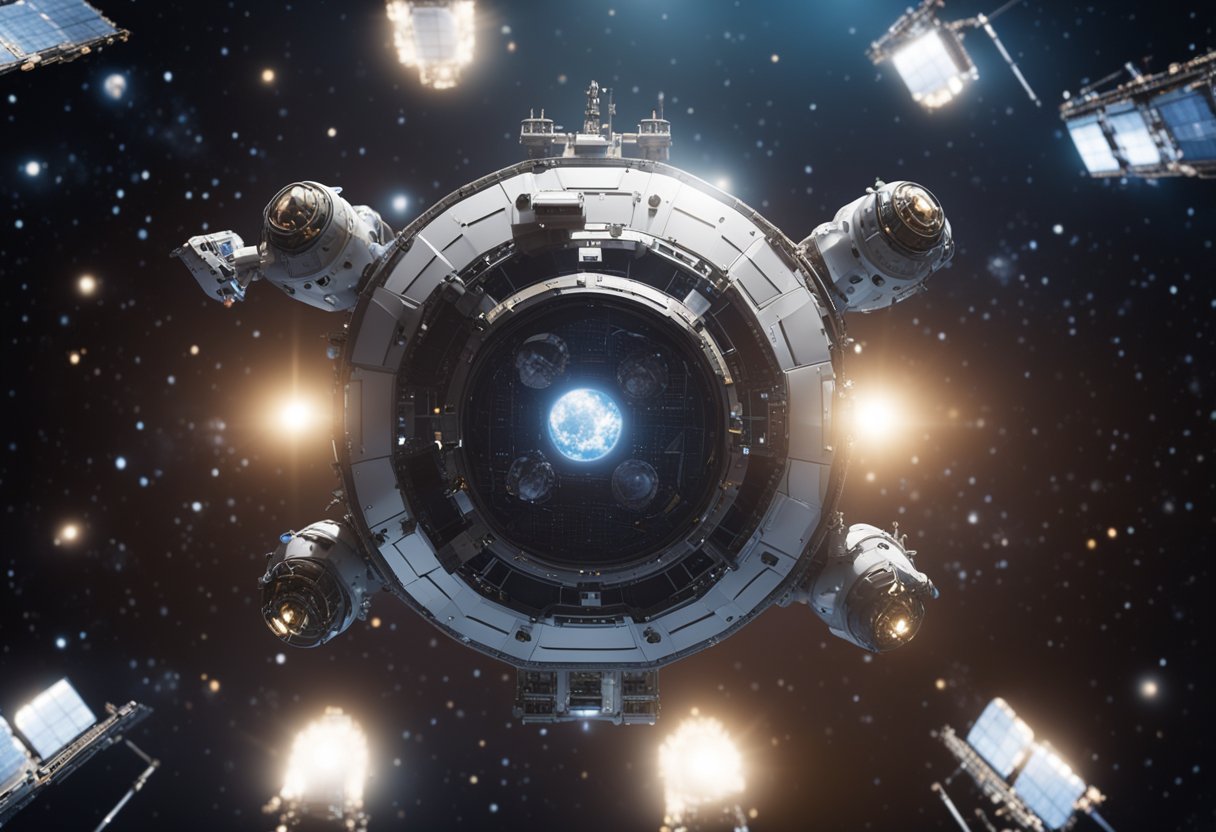
Spacecraft Maintenance and Repair – Maintaining and repairing spacecraft is a crucial aspect of space exploration and utilisation, as these complex machines face the harsh environment of space. We must address a myriad of challenges to ensure the longevity and continued performance of these vehicles, ranging from mitigating cosmic radiation damage to addressing mechanical wear and tear. Recent advancements in space technology have allowed for the development of innovative maintenance and repair strategies. These include robotic systems capable of performing complex tasks and the emergence of modular spacecraft designs that facilitate easier replacement of components.
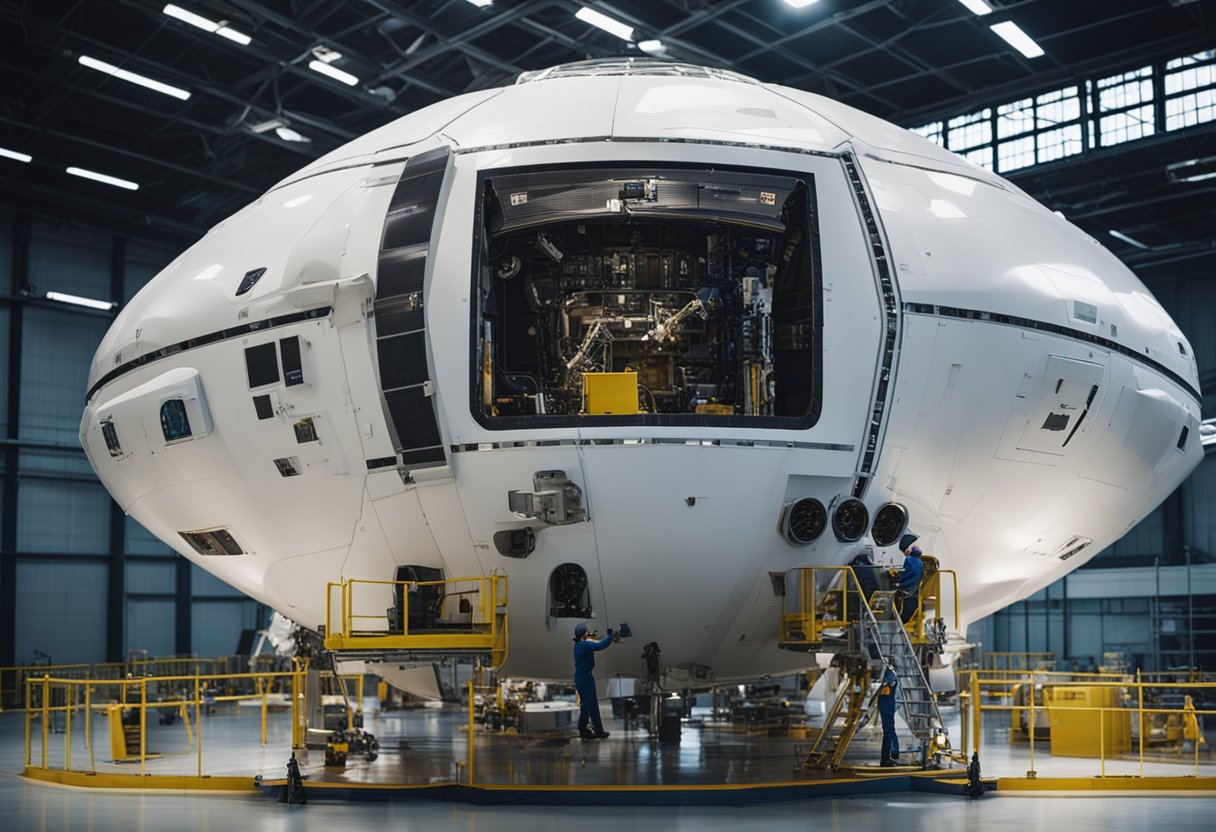
Understanding the intricate dynamics of orbital mechanics is essential for conducting repairs in space. We must skilfully manage fuel and propellants to adjust satellites’ orbits, perform rendezvous manoeuvres, or safely de-orbit them. In addition, life support and environmental control systems are critical during manned repair missions; they must function flawlessly to protect astronauts as they work. As the space industry evolves, we anticipate new methods for extending the usability of spacecraft, such as on-orbit upgrades and the use of autonomous drones for in-situ repairs, which can dramatically increase a spacecraft’s operational lifespan.
In the inception and progression of space ventures, maintenance and repair have continually evolved, influenced by groundbreaking missions and technological innovation, to counteract the challenges of orbital debris.
Our experience in space servicing began with missions focused on demonstrating capabilities for in-orbit satellite repair. Notably, the NASA-led Space Shuttle programme conducted several missions that emphasised servicing, with the Hubble Space Telescope (HST) serving as a cornerstone for such operations. The first servicing mission to Hubble, STS-61 in 1993, showcased our ability to conduct complex repairs in space, including the replacement of instruments and the correction of Hubble’s flawed primary mirror.
As space exploration advanced, the technologies for maintaining and repairing satellites also improved significantly. The Space Shuttle flights were pivotal in practising these tasks. For instance, astronauts have installed new instruments and conducted maintenance on the HST, contributing substantially to the telescope’s extended operational life and the wealth of astronomical data it provides. The tools and techniques developed during these missions laid a foundation for future capabilities in robotic and astronaut-led repair endeavours.
Orbital debris poses an ever-growing threat to satellites and other space assets, necessitating advancements in our maintenance and repair approach. Incidents such as the collision of Iridium 33 and Kosmos 2251 highlighted the need for manoeuvring capabilities and potential debris removal solutions. Our increased presence in space has made us aware of the importance of managing and mitigating debris to safeguard ongoing and future missions in the increasingly congested orbital environment.
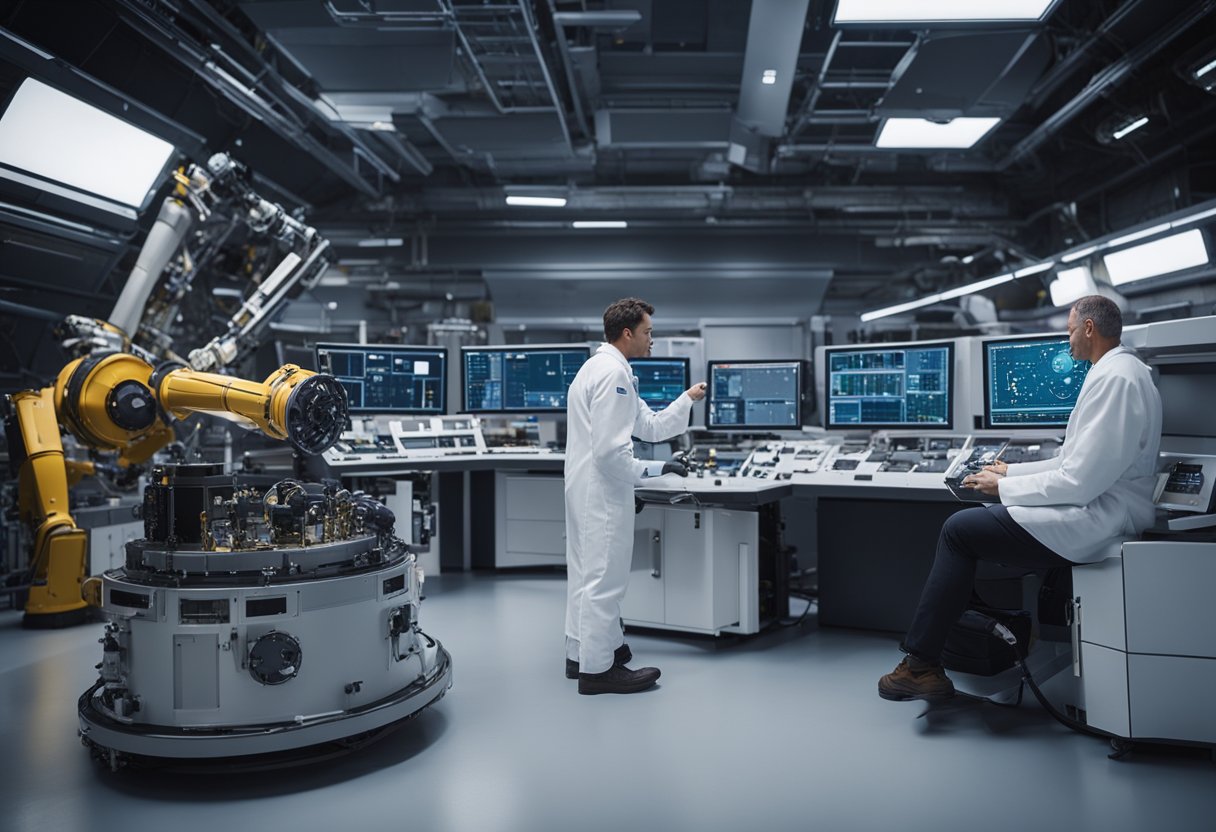
In the evolving landscape of space exploration, we continuously refine and enhance spacecraft maintenance strategies. These strategies are critical for the longevity of missions and the safety of assets in orbit.
Routine checks and maintenance procedures form the foundation of current spacecraft maintenance strategies. Technicians carry out regular inspections on spacecraft components to ensure they are functioning optimally. These checks are vital for identifying any potential issues before they escalate into more significant problems that could undermine a mission. Maintenance operations generally involve:
The debate between autonomous and manual repair approaches is at the forefront of spacecraft maintenance. The integration of AI-powered systems has heralded a shift toward more autonomous repair procedures. These systems can often diagnose and rectify problems with minimal human intervention, which is beneficial in the vacuum of space, where manual repairs are riskier and more complex. On the other hand, certain repairs require the dexterity and problem-solving skills that only astronauts equipped with a robotic arm can provide, especially for intricate servicing missions.
The concept of utilising servicing satellites is a game-changer in the realm of maintenance and repair in orbit. These dedicated satellites are equipped with tools and technology, such as robotic arms, to carry out refueling, upgrading, or repairing neighbouring satellites. This emerging approach extends the life of spacecraft without the need for returning to Earth and has the potential to transform our maintenance operations for future space ventures. Our efforts in this domain are inspired by visions of space tourism as seen on websites like SpaceVoyageVentures.com, where the preservation of spacecraft integrity is essential for both practical missions and tourist experiences alike.
In this section, we explore the recent advancements that bolster the reliability and longevity of spacecraft during their crucial missions. These include robotic technologies that perform repairs and maintenance, the debut of satellites with significantly extended lifespans, and the evolution of on-orbit servicing strategies.
We’ve witnessed substantial innovation in the realm of robotic arms used for space maintenance tasks. These arms now possess enhanced dexterity and upgraded tools and technologies. For instance, the famous Canadarm2, a product of continued technology upgrades, has become essential for performing complex tasks on the International Space Station. Such robotic arms are also beneficial for on-orbit servicing, contributing to spacecraft longevity.
Satellites are now being designed for greater durability, with some equipped with SMA (Shape Memory Alloy) thrusters. These thrusters provide satellites with the capability to perform more precision manoeuvres, extending their operational lifespan in the process. A focus on innovations such as the deployment of satellites with this extended lifespan technology leads to reduced maintenance and repair requirements, therefore lowering costs in the long run.
Our current development of on-orbit servicing technologies is a leap towards autonomous spacecraft repair. Featuring cutting-edge tools and technologies, this area of space technologies offers the promise of extending missions way beyond their expected life. Such servicing technologies could eventually facilitate the ambitions of ventures like SpaceVoyageVentures.com, which aims at enabling space tourism by ensuring the vehicles’ utmost readiness and reliability.
When conducting maintenance and repair operations on spacecraft, we must consider the intricacies of orbital mechanics, which dictate the safe and efficient execution of such missions. Our approach must account for the dynamic environment of space, where the factors of relative motion, debris, and the physical properties of satellites become critical elements in planning and execution.
In the context of orbital mechanics, docking and rendezvous are highly complex procedures that require precise calculations and manoeuvres. Satellites and service vehicles must match their orbits, a task made challenging by the high velocity and minute room for error in space. Misjudgements can lead to catastrophic collisions, creating more orbital debris which poses further safety concerns.
We place paramount importance on maintaining safety standards to negate the impact of maintenance missions on existing orbital patterns. It’s crucial that repairs don’t inadvertently alter the trajectories of other objects, especially in regions densely populated by satellites. Strategies must be developed to minimise potential collision risks with other satellites or debris.
The physical properties of a satellite, including its inertia and mass, can complicate maintenance efforts. Our engineering teams must calculate the precise amount of force needed to adjust a satellite’s position without affecting its orbit. Working with these considerations helps us prevent unintended drift and maintain the satellite’s intended orbit path.
By methodically addressing these challenges, we uphold our commitment to advancing space exploration and keeping the orbital environment secure and sustainable for all.
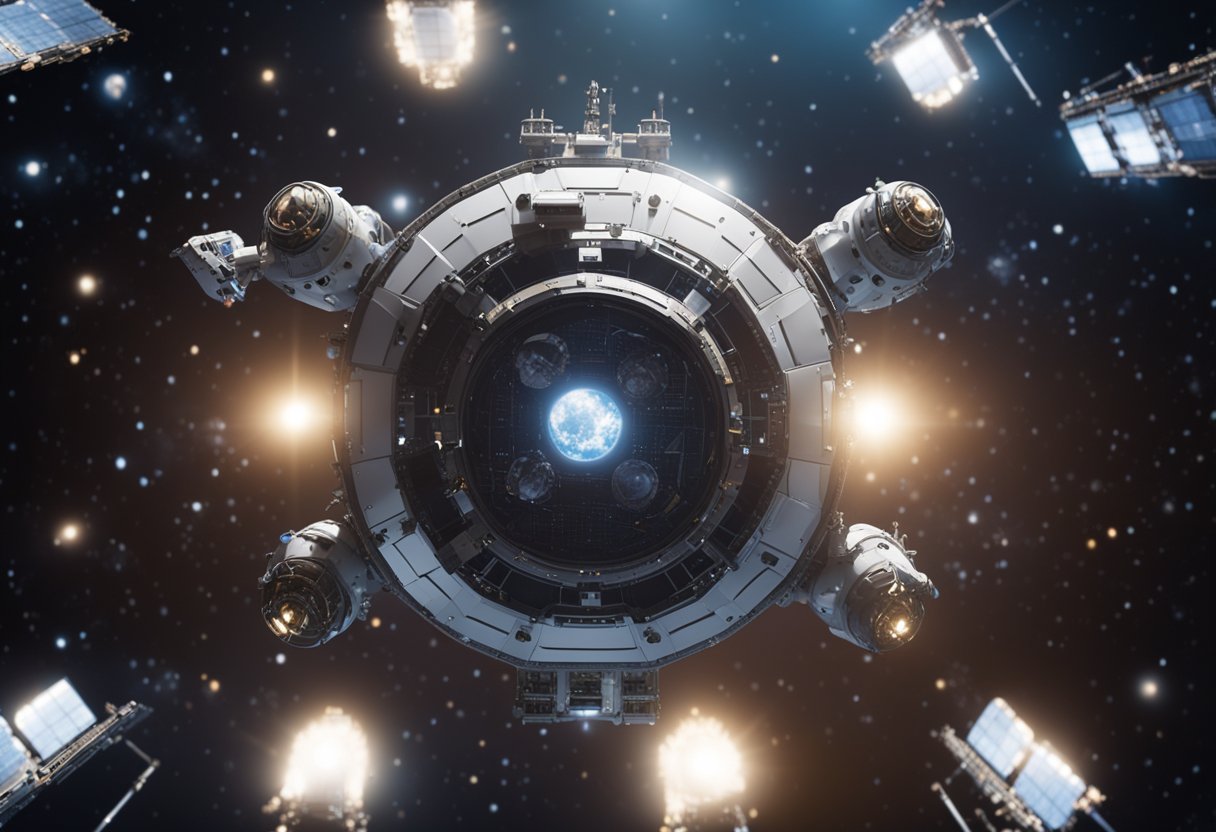
Effective communication systems are crucial for the success of space missions, from routine maintenance to critical repairs. Space vehicles utilise advanced techniques to ensure smooth operations and connectivity with Earth.
Ground control plays a pivotal role in space maintenance operations. It serves as a central hub for monitoring spacecraft health and providing necessary guidance for repairs. Using the mission control centre, technicians relay information and instructions to astronauts via Ka-band transmission, which ensures high-quality communication. Instruments such as the communications antenna are key to maintaining this essential link with our spacecraft.
During a mission, communication and navigation systems may require upgrades to improve performance or correct issues. We execute these updates through secure links that allow us to upload new software from Earth. The technological advancements in these systems provide astronauts with the necessary tools to navigate effectively and maintain constant contact with our team on the ground. Such upgrades may include enhancements to the Ka-band transmission capabilities or the integration of new firmware into the spacecraft’s communications systems.
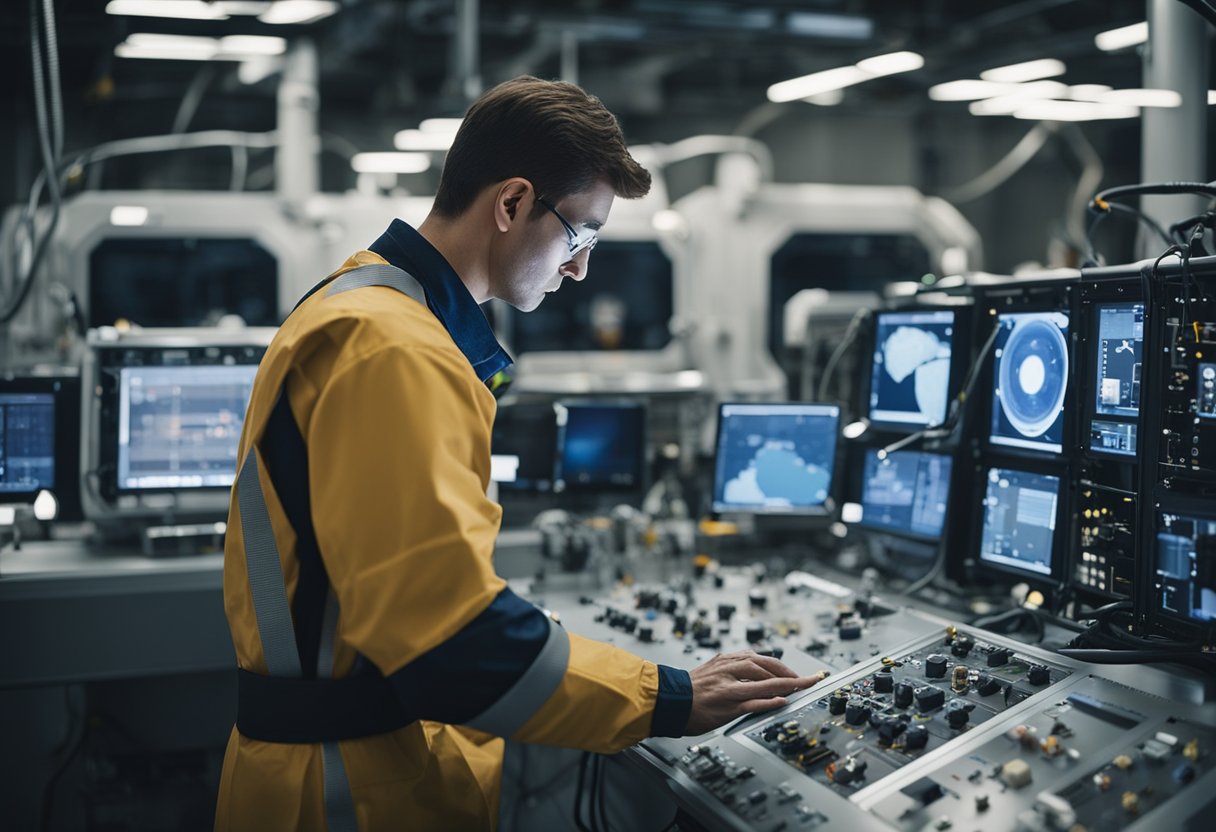
In the unforgiving environment of space, life support and environmental control systems are crucial for the survival of astronauts. These systems must function seamlessly, even during maintenance and repair activities. Here, we explore the intricacies of maintaining habitability and managing resources on a spacecraft while repairs are underway.
Ensuring that astronauts remain safe and that habitable conditions are maintained aboard a spacecraft is a top priority during repairs. The Environmental Control and Life Support System (ECLSS) manages the air and temperature, providing breathable oxygen while removing carbon dioxide and other contaminants. During repairs, redundancies in the life support system, such as secondary oxygen generation modules, play a vital role in sustaining a safe environment.
A prime example of an ECLSS in action can be seen on the International Space Station, where it has undergone both scheduled and unscheduled maintenance. We must ensure that the atmosphere within the spacecraft remains within livable conditions, monitoring the pressure, humidity, and composition of the air. Any deviation can pose a significant threat to the crew, making real-time monitoring and rapid response capabilities essential components of any repair protocol.
Effective resource management is fundamental to maintaining spacecraft operations during repair periods. We are tasked with keeping a meticulous account of onboard resources like water and power. These resources are finite and must be recycled and rationed judiciously to ensure the continued operation of life support systems. Advanced recycling technologies enable us to maximise the reuse of water and other vital supplies.
Advances in the field, spearheaded by projects such as the AES Water Recovery Project, are developing prototypes that enhance the robustness of these recycling processes. Moreover, the design of our ECLSS must allow for ease of access and repair, minimising the resources required for maintenance tasks. In an era where space exploration is expanding into the realm of space tourism, as chronicled by SpaceVoyageVentures.com, the reliability and efficiency of our life support systems during repairs become even more paramount, for both future tourist voyages and current expeditions.
The integration of robotics and automation in space is revolutionising the way we maintain and operate space infrastructure. Ground-breaking advancements in these fields are enabling unprecedented levels of precision and efficiency in servicing spacecraft.
Robotic Servicing Vehicles (RSVs) are essential components in the servicing industry, providing a range of support operations that include inspection, repair, and refuelling. A pivotal element in these vehicles is the robotic arm, which must be highly dexterous to handle complex tasks. These arms often have multiple degrees of freedom, allowing them to manoeuvre with the precision required in the vacuum of space. Their roles are not limited to maintenance; they also assist in manufacturing processes—such as assembling large space structures—and in deploying payloads, thereby contributing significantly to space infrastructure development.
The pursuit of autonomy is transforming the landscape of space robotics, propelling the industry towards a future where human oversight is minimally required. Systems are increasingly autonomous, with capabilities to perform intricate tasks unsupervised, significantly reducing the risks associated with human spaceflight. As these advancements continue, our capacity to manage complex space operations without direct human intervention grows, influencing all aspects from mission planning to the execution of critical servicing tasks. This evolution towards autonomous robotic systems promises to sustain and expand the pristine realm of space travel, including ventures like those being chronicled by SpaceVoyageVentures.com, which highlights imminent space tourism opportunities.
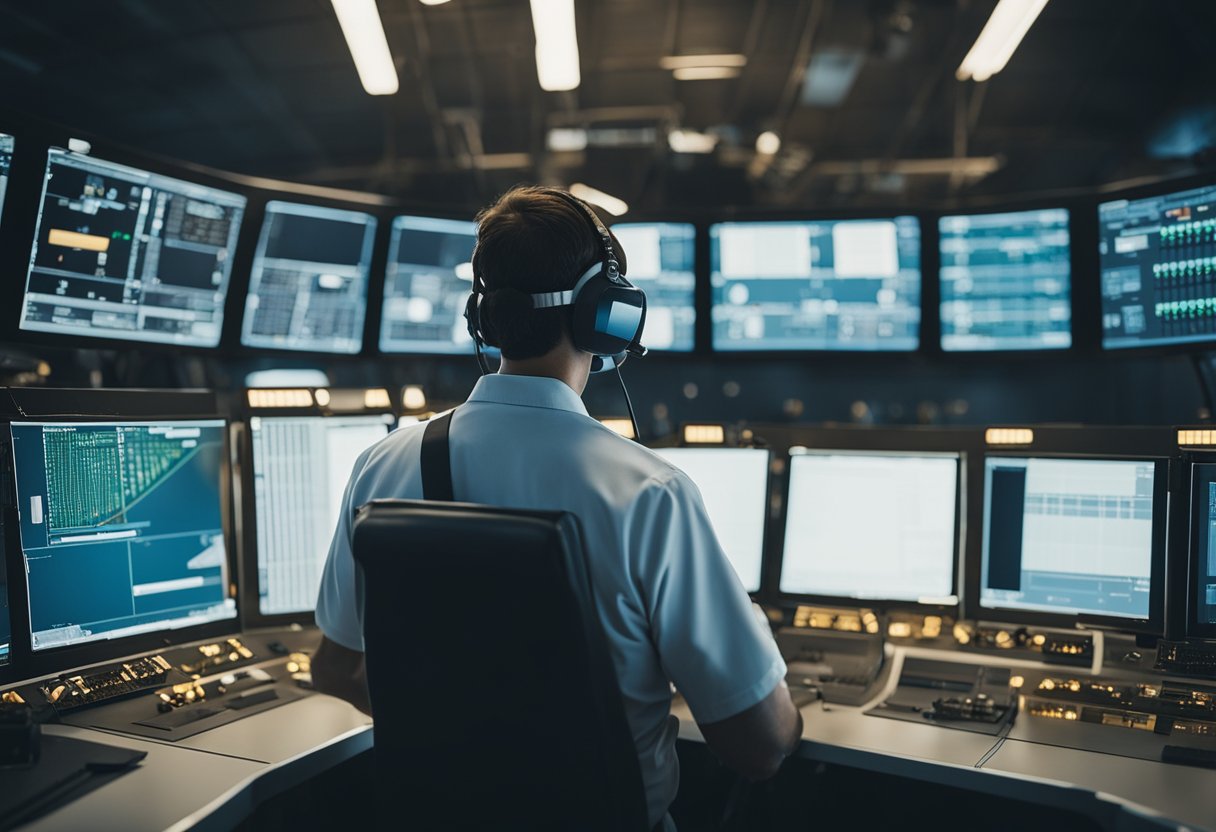
Managing fuel and propellant is critical to the sustainability and functionality of spacecraft during missions. Efficient fuel usage and advanced refueling capabilities are essential for extending the lifespans of satellites and supporting long-duration space travel.
In-orbit refuelling represents a revolutionary advancement in space technology. The autonomous docking and fuel transfer operations, such as those demonstrated by the Orbital Express project, have paved the way for refuelling satellites and other spacecraft without human intervention. These technologies utilise robotics to connect with a spacecraft and pump fuel into its reservoirs. Methane, commonly used as a propellant, can be replenished, ensuring that thrusters have the necessary resources to maintain orbit and perform manoeuvres.
Our approach to propellant transfer and storage involves a combination of engineering expertise and precautionary measures in handling volatile substances like liquid hydrogen or methane. The NASA Propellants and Life Support Branch provides an exemplary model, offering comprehensive services for a vast array of liquid propellants, pressurants, and coolants. Furthermore, a proper propellant transfer system must adhere to stringent standards for contamination control, as outlined in protocols like those at the George C. Marshall Space Flight Center. Effective storage solutions must be conditioned to maintain the stability and integrity of propellants over time, especially when considering the temperature extremes in space.
By optimising fuel and propellant management strategies, we can substantially improve the operational capabilities of our space assets. Whether it’s extending the mission duration of satellites or preparing for complex expeditions documented by sites like SpaceVoyageVentures.com, proper handling and replenishment of these vital resources is paramount.
In orbit, where the costs of launching new satellites are astronomical, extending the usable life of space hardware is both economical and essential. Our efforts focus on component replacement, system overhaul, and innovative approaches to ensure these highly valuable assets continue to function beyond their original design life.
The in-space replacement of components allows us to address failures and upgrade systems without the need to launch entirely new satellites. For instance, advances in robotics and autonomy featured in On-orbit Servicing are revolutionising spacecraft maintenance. By replacing outdated components with new technology, we can significantly enhance performance and delay the end of a spacecraft’s service life.
Space agencies and private sector firms are investing in technologies to enable these complex tasks. Robotic arms, similar to those used for the Robotic Refueling Missions, can perform delicate operations such as swapping out hardware or patching thermal blankets, tasks that were once only conceivable if performed by an astronaut during a spacewalk.
Extending a spacecraft’s lifespan is not just about repairs but also about refueling and technological upgrades. Refueling missions are on track to become routine, with spacecraft low on propellant being topped up to stay operational. This extension method fundamentally alters how we approach design life, turning long-term missions into possibilities.
Moreover, the application of new technologies to existing spacecraft introduces enhanced capabilities. Take the upcoming NASA mission OSAM-1, planned to showcase not just refueling but also in-orbit repair. It’s a testament to human ingenuity, showcasing how sustainability in space travel is becoming a tangible objective, much like the future trips highlighted on SpaceVoyageVentures.com—a nod to our aspirations for space tourism.
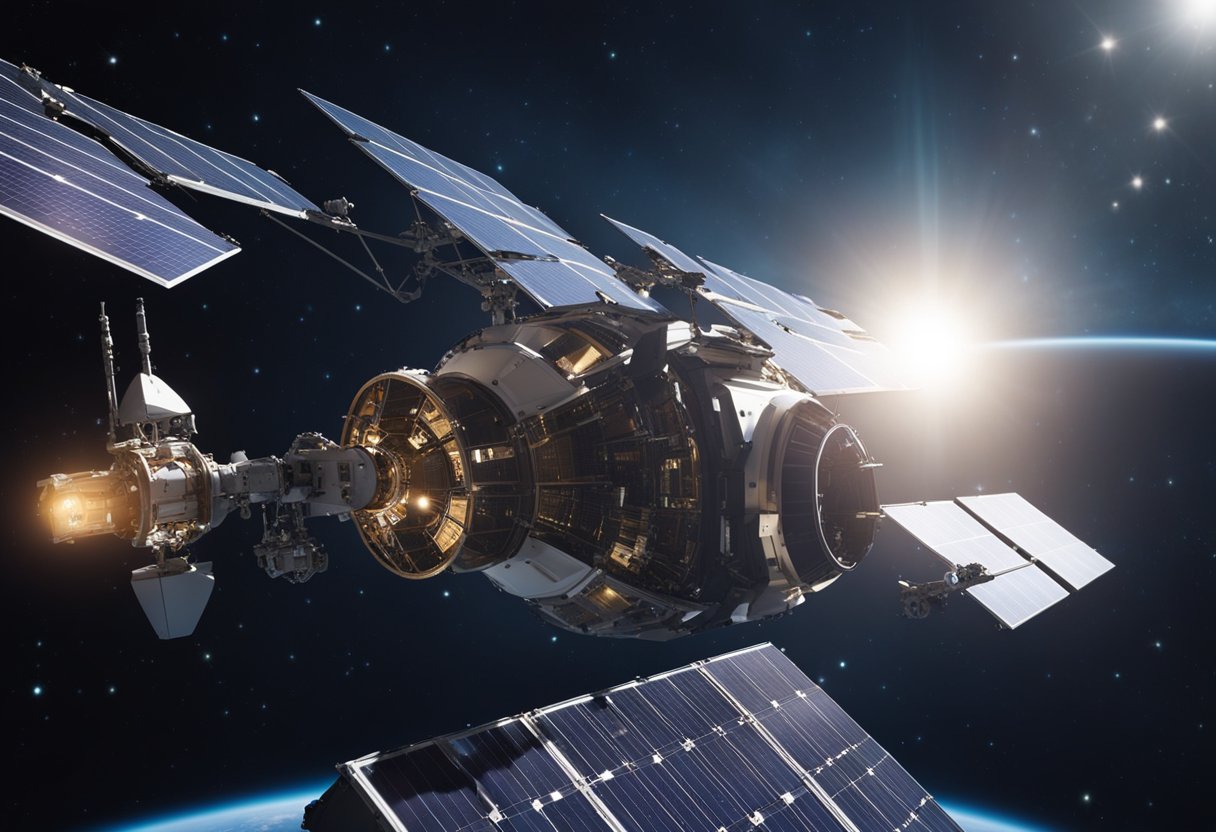
In our exploration of the cosmos, effective spacecraft servicing is a pivotal capability that allows for more sustainable and ambitious missions. We’re moving towards a future where repair and maintenance in space will be a common endeavour, significantly extending the functional life of spacecraft.
The landscape of space servicing projects is rapidly evolving, notably with NASA’s OSAM-1 mission, a pioneering step in demonstrating autonomous in-space assembly and manufacturing. OSAM-1 aims to autonomously assemble a communication antenna and manufacture a beam aboard a spacecraft. This technique stands to revolutionise how we manage and maintain our assets in space.
Similarly, the international space station serves as a testbed for technologies essential to satellite servicing, such as advanced robotics and external platforms for repair and maintenance tasks. By harnessing these technologies, we can ensure that satellites continue to operate well beyond their designed service lives.
As our ambitions reach beyond the Earth’s orbit to the Moon and Mars, the capacity for in-situ maintenance and repair takes on unprecedented importance. Future lunar missions could utilise in-space manufacturing and servicing capabilities to establish and maintain infrastructure. This would allow for the transfer of equipment and technology from lunar to Martian expeditions, mitigating risks and reducing costs.
Furthermore, the advancement of space exploration is tightly coupled with the development of international partnerships and commercial entities, such as SpaceVoyageVentures.com, which explore the premise of space tourism and its synergies with traditional scientific missions. This collaboration will also be crucial as we aim to sustain human presence on the Moon and Mars, where servicing systems will play an integral role in the upkeep of habitats and vehicles.
In this section, we address common queries regarding the intricate procedures and responsibilities involved in the servicing, repair, and maintenance of spacecraft, specifically focusing on the International Space Station and satellites.
To service satellites in orbit, sophisticated missions are conducted which may involve rendezvous and docking procedures, the replacement of faulty modules, and refuelling. These are intricate tasks often facilitated by robotic technology and advancements in autonomy, allowing for delicate operations without direct human intervention.
The upkeep of the International Space Station (ISS) is a collaborative effort primarily managed by the space agencies of the participating countries—NASA, Roscosmos, JAXA, ESA, and CSA. These agencies are responsible for operational tasks and maintenance that ensure the ISS remains functional and safe for astronauts.
Astronauts utilise a range of specialised equipment, including high-quality hand and power tools. Most of these tools are unmodified and are similar to commercially available products, yet they’re designed to work effectively in the microgravity environment aboard the ISS for various in-flight maintenance tasks.
Astronauts undergo rigorous training on Earth to prepare for extravehicular activities (EVAs), commonly known as spacewalks. This training involves simulated environments, such as large swimming pools to mimic zero-gravity, and the use of virtual reality to rehearse complex repair procedures and equipment handling.
Primary challenges of in-space maintenance missions include the harsh conditions of space, such as extreme temperatures and micrometeoroids, technical complexities, and the need for precise coordination. The unpredictable nature of space also forces continuous adaptation of maintenance strategies.
Advancements in robotic technology have revolutionised spacecraft maintenance. Robots can perform tasks too dangerous or intricate for astronauts and help in servicing, maintenance, and repair of equipment, enhancing safety and extending the capabilities and lifespan of existing hardware.